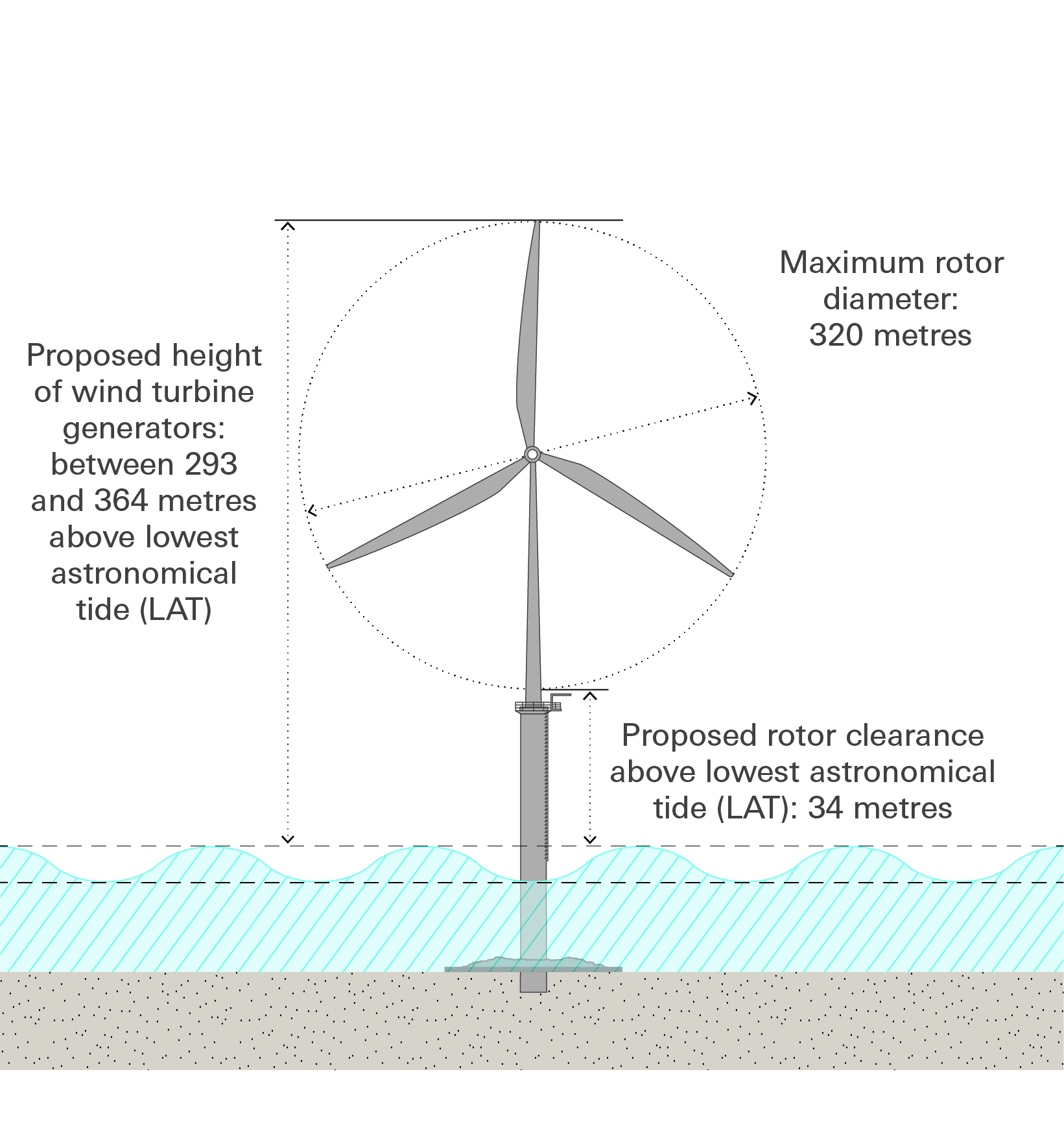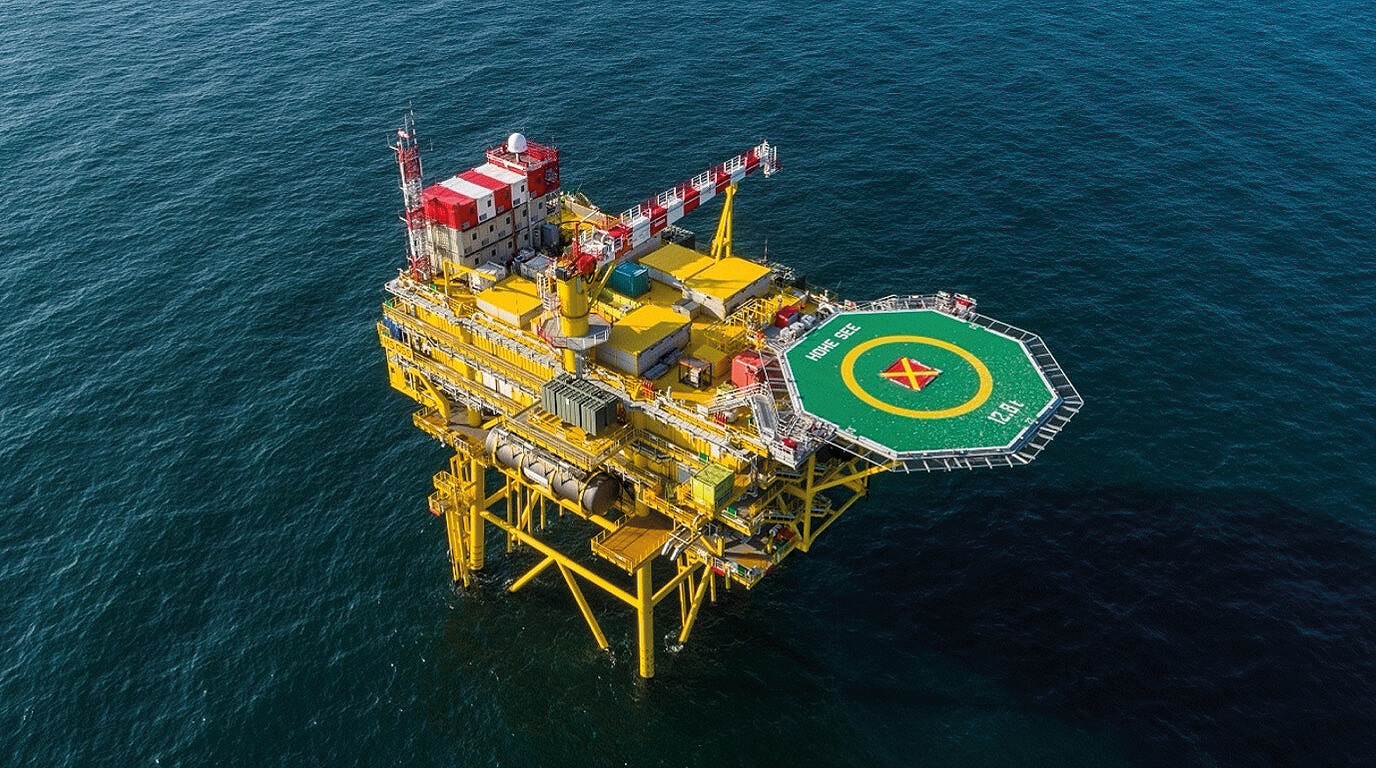Welcome
The Mona Offshore Wind Project is a proposed offshore wind farm located in the east Irish Sea, which is being developed by Mona Offshore Wind Ltd, a joint venture of bp and Energie Baden-Württemberg AG (EnBW).
Mona includes offshore elements, to generate electricity, and both offshore and onshore elements to enable the transmission of the electricity generated to the national grid:
- Wind turbine generators (up to 96 turbines)
- Offshore substation platform(s)
- Offshore interconnector cables, inter-array cables and export cables
- Four transition joint bays (connecting the offshore and onshore cables)
- Onshore cables
- Onshore Substation
- Connection into the existing Bodelwyddan National Grid Substation
The Mona Offshore Wind Project is classed as a Nationally Significant Infrastructure Project (NSIP). This means that a development consent order (DCO) application has been submitted to the Secretary of State.
Our application for development consent has been accepted for examination by the Secretary of State for Levelling up, Housing and Communities. The proposals are currently the subject of the examination process, with a decision is expected to be made in 2025.
To view the application documents please Click here. To view a notice publicising the dates and times of examination hearings please Click here.
Register for updates
Please register your details with us if you would like to be kept informed about our project.
Register hereWho are EnBW and bp?
This project is being brought forward as a joint venture of bp and Energie Baden-Württemberg AG (EnBW).
About bp
bp has set out an ambition to be a net-zero company by 2050 or sooner, and to help the world get to net zero. bp has set out a strategy for delivering this ambition. bp is focused on delivering its transformation into an integrated energy company, helping to provide the energy the world needs today, and investing in the energy transition.
In January 2021, bp and Equinor agreed to develop together two major lease areas located in federal waters off New York and Massachusetts, Empire Wind and Beacon Wind. In January 2024, bp and Equinor announced that bp will take ownership of Equinor’s 50% stake in the Beacon Wind US offshore wind projects and Equinor will take ownership of bp’s 50% stake in the Empire Wind US offshore wind projects. Subject to closing the transaction, bp will work independently to develop Beacon 1 and Beacon 2 on a wholly owned basis. Beacon Wind 1 and 2 comprise a combined potential generative capacity in excess of approximately 2.5 GW. In the UK, bp and partner EnBW are leading the development of the Morgan and Mona offshore wind projects in the Irish Sea and the Morven offshore wind project in the North Sea. These projects have a combined potential generating capacity of 5.9 GW, sufficient to power the equivalent of around 6 million UK households. In early 2023, bp was successful in its bid to develop its first floating offshore wind demonstration project offshore Aberdeenshire.
In July 2023, bp was successful in its bids for two sites offshore in Germany with a potential generating capacity of 4 GW. bp has formed a strategic partnership with Japanese conglomerate Marubeni to explore offshore wind opportunities in Japan. bp has also formed a JV with Norway’s Deep Wind Offshore, a part of which saw bp acquire a 55% stake in the company’s early-stage offshore wind portfolio, which includes four projects across the Korean peninsula.
bp already has an onshore wind business in the US with a gross generating capacity of 1,700 MW, operating nine wind assets across the country. On 30 November 2023, bp announced that it agreed to acquire the 50.03% interest it does not already own in Lightsource bp, a global leader in utility-scale solar and energy storage development, which means that bp will take full ownership of Lightsource bp following completion of the transaction.
About EnBW
Energie Baden-Wuerttemberg AG (EnBW) is one of the largest energy supply companies in Germany and supplies electricity, gas, water and energy solutions and energy industry services to around 5.5 million customers with a workforce of more than 27,000 employees.
EnBW aims to strengthen its position as a sustainable and innovative infrastructure partner for customers, citizens and local authorities to an even greater extent. The repositioning of EnBW with a focus on renewable energies and smart infrastructure solutions is a key component of its strategy. With a focus on renewable energy and smart infrastructure solutions, EnBW’s objective is for half of the electricity it supplies to be from renewable sources by the end of 2025. This is already having a noticeable effect on the reduction of CO2 emissions, which EnBW aims to halve by 2030 and to be climate neutral by 2035.
EnBW has been involved in the operation of hydro power plants in the Black Forest for more than 100 years and has a large and continuously growing number of onshore wind farms and solar photovoltaics in Germany, France and Sweden. In addition, EnBW developed, constructed and operates four offshore wind farms in Germany (EnBW Baltic 1, Baltic 2, Hohe See and Albatros) with a total installed capacity of 945 MW, commissioned between 2011 and 2020. A further 900 MW offshore wind farm, He Dreiht, is currently under development in Germany.
Why we need offshore wind
Climate change is one of the biggest challenges the world faces. It is affecting every country and we must all play a role in helping to combat it.
This project can play an important part in the energy transition by delivering a significant volume of offshore wind in support of the Welsh and UK Governments' targets.
The UK is a world leader in offshore wind and the seas around us are ideal for harnessing wind power. Our project will be operational by 2030 and will play a key role in tackling climate change by:
- Generating low carbon electricity from an offshore wind farm in support of the decarbonisation and security of the Welsh and UK electricity supply.
- Optimising generation capacity within the constraints of available sites and grid infrastructure.
- Supporting the Welsh Government's aim for renewables to generate electricity equal to 70 per cent of Wales's consumption by 2030 as set out in the Net Zero Strategic Plan.
- Delivering a significant volume of offshore wind in support of the UK Government's Net Zero by 2050 target and commitment to deliver up to 50 gigawatts (GW) of offshore wind by 2030.
- Co-existing and collaborating with other activities, developers and operators to enable the balance of different users.
This project will also:
- Contribute to achieving the aims of the UK's Energy Security Strategy.
- Contribute to the local, regional and national economy by providing substantial investment, as well as employment and new infrastructure during all phases of the project.
- Continue to drive technology and development costs down to provide low-cost energy to consumers and provide community benefits.
- Align with the key drivers in current and planned updates to national policy in Wales and the UK.
The UK already generates around 15GW of its power from offshore wind. It plays an increasingly important role in our energy mix. Wind power represents around a third (30%) of total UK electricity generation. And, in the last quarter of 2023, wind generated more power than gas for the first time in history.
This is impressive progress, but we need to go a lot further. To achieve our climate goals, we need to almost quadruple our offshore wind generation, meaning we need up to 50GW of generating capacity installed and operating by 2030.
How offshore wind farms work
What are wind turbine generators?
For more information on the likely design of the wind turbine generators for Mona Offshore Wind Project, please see Volume 1 – Introductory Chapters, chapter 3 (Project Description) of the PEIR.

Indicative diagram of what a typical wind turbine generator could look like. Actual design may differ.
What are Offshore Substation Platforms (OSPs)?
These are fixed structures that would be located within the wind farm site. The purpose of these structures is to convert the power from the wind turbine generators into a form ready to be transferred to shore.

Indicative image of what a typical OSP could look like. Actual design may differ.
What are inter-connector cables?
These are electrical cables that link one or more OSPs.
What are inter-array cables?
These are cables that link the wind turbine generators to each other and the OSPs.
What are offshore export cables?
These are cables that transfer electricity from OSPs to the shore.
Visualisations
The PEIR contains a series of visualisation diagrams which show what the wind farm could look like from various points. You can find them in the Seascape, Landscape and Visual Resources chapter.
View visualisations